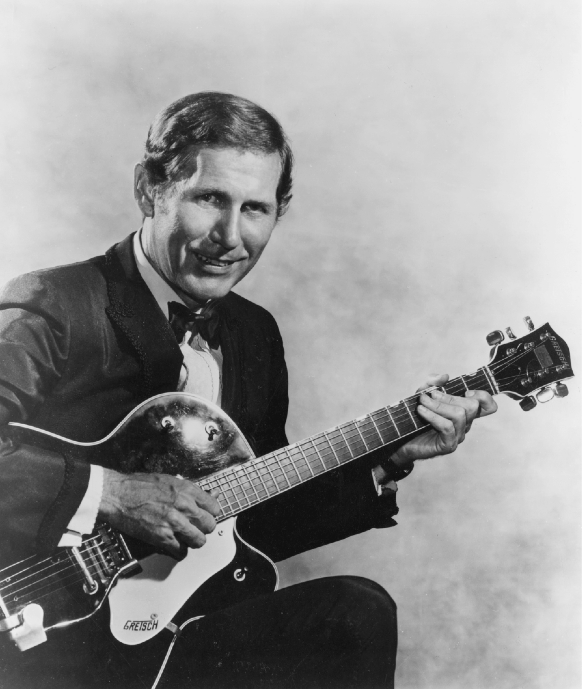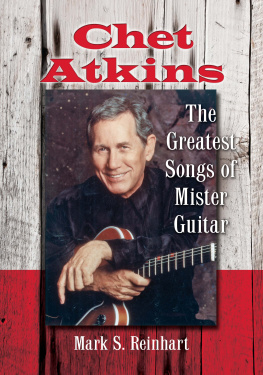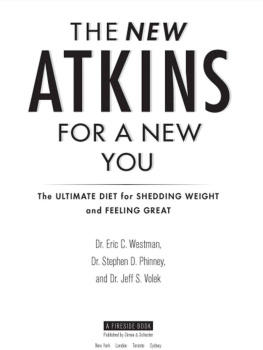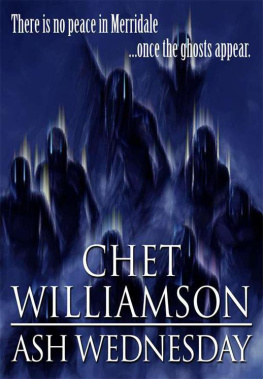

Chet Atkins with his 1959 Gretsch Chet Atkins Country Gentleman electric guitar, circa 1970.
Chet Atkins
The Greatest Songs of Mister Guitar
Mark S. Reinhart

McFarland & Company, Inc., Publishers
Jefferson, North Carolina
Also by MARK S. REINHART
The Batman Filmography, 2d ed. (McFarland, 2013)
Abraham Lincoln on Screen: Fictional and Documentary Portrayals on Film and Television, 2d ed. (McFarland, 2009; paperback 2012)
LIBRARY OF CONGRESS CATALOGUING DATA ARE AVAILABLE
BRITISH LIBRARY CATALOGUING DATA ARE AVAILABLE
e-ISBN: 978-1-4766-1783-1
2014 Mark S. Reinhart. All rights reserved
No part of this book may be reproduced or transmitted in any formor by any means, electronic or mechanical, including photocopyingor recording, or by any information storage and retrieval system,without permission in writing from the publisher.
On the cover: Chet Atkins with a Gibson Chet Atkins Country Gentleman electric guitar, 1990
McFarland & Company, Inc., Publishers
Box 611, Jefferson, North Carolina 28640
www.mcfarlandpub.com
For my parents and fellow Chet Atkins fans,
Larry and Sally Reinhart
Acknowledgments
Obviously, an analysis and appreciation of the most successful and noteworthy recordings of Chet Atkins could not exist without the man who created those recordings. So my first and biggest thank you must be delivered beyond our earthly realmI would like to thank Mister Guitar himself for the incredible musical legacy that he has left to the world. Chet, you will always be my biggest musical hero, and I am proud to offer this book as a personal tribute.
I would also like to thank my father, Larry Reinhart, a fine guitar player in his own right, who introduced me to Chets music before I had even started grade school. Because of Dad, I grew up listening to Chet and learning to play the guitar myself, and these pursuits have brought immeasurable joy to my life. Thanks, Dad.
I want to thank some other members of my family as well. My mother Sally Reinhart has always enjoyed Chets music, too, and a number of times she made sure that we had great seats for Chet shows in and around our hometown. Also, she has always been kind enough to be a great audience for us whenever we play our guitars as much like Chet as we can. Thanks, Mom.
And I would like to thank my wife, Jill, my sons Taylor and Keaton, and my daughter, Jenna, for their ongoing support of all of my creative projects. I was able to take Jill to see Chet perform live on one occasion, so she got the chance to witness his musical genius firsthand. Unfortunately, my kids never got this chance, but they have still appreciated Chets music enough over the years to allow some of his songs to make it onto their iPod playlists. Thanks, Jill, Taylor, Keaton and Jennait means a lot to me that you have welcomed Chet into our familys music mix.
I would like to thank Tom Redmond, the creator and administrator of the official Chet Atkins website, misterguitar.us, for his support of this project. Toms site is a wonderful resource for all Chet fans, and his message board, known as the Chetboard, is a perfect forum to allow all of those fans to stay in contact. All throughout the process of writing this book, I have been consulting with Chetboard members about many aspects of Chets recording history. Everyone has been supportive of my work, and willing to share their knowledge of all things Chet with meso my thanks go out not only to Tom, but also to all of the Chetboarders out there.
In fact, there are several Chet experts I first met through the Chetboard that ended up having a direct influence on the creation of this bookso I would like to thank them by name. In 2013, writer John Chintala authored an exhaustive compilation of Chets musical work, Chet Atkins: A Complete Guide to Mister Guitar. Both Johns excellent research and direct correspondence with me were a huge help in writing this book. The same can be said about the well-known fingerstyle guitarist/author Craig Dobbins, who over the years had the privilege of working directly with Chet and several of Chets close musical associates. Craig was kind enough to share his insights regarding Chets musical career with me. Thank you, John and CraigI hope both of you will feel that this book honors Chets memory as much as your fine work has.
Introduction
Allow me to tell you a little bit about myself and my admiration for Chet Atkins. It really is no exaggeration for me to say that I have been an avid fan for most all of my life. My father, Larry Reinhart, introduced me to Chets music before I had even started grade school. In fact, some of my earliest memories are of sitting with Mom and Dad in our living room, watching Chet play guitar on television. Mom and Dad even took me to see Chet perform in and around our hometown of Columbus, Ohio, a few times when I was a kid.
Chet was not the only guitarist I heard back then. Dad had played the instrument ever since he was a young man, so in addition to listening to Chet himself, I got to hear Dads great Chet-inspired picking. This led me to be transfixed by the guitar before I was anywhere near big enough to hold a full-size one. I wore out more than a few toy plastic guitars before I decided to start learning how to play the instrument.
In fact, playing the guitar quickly became one of my major passions. By the time I was in my teens, three musical artists in particular had led me to want to become a professional singer/guitaristthose artists were Chet (of course!), the Beatles and the Monkees. I realize that I might well have just raised a few eyebrows by putting the Monkees in this list.
Still, Ill stand steadfastly by my love for Chet, The Beatles and the Monkees, and Ill point out the common thread that connected themtheir use of electric guitars made by the Gretsch company. Chets decades-long endorsement of Gretsch would become one of the major highlights of his career, and it led to the Beatles lead guitarist George Harrison using Chet Atkins Gretsch models during the bands early years. Harrison never formally endorsed Gretsch, but his use of the companys guitars led many other 1960s musicians to use them as well, including the Monkees. In fact, The Monkees did formally endorse Gretsch after they had become so successfulin 1966 and 1967, the company manufactured a Monkees model guitar. That Great Gretsch Sound was the companys longtime slogan, and as far as I was concerned, Chet, the Beatles and the Monkees were three artists who proved that slogan to be true beyond the shadow of a doubt.
The look and the sound of the Gretsch electric guitars that Chet, the Beatles and the Monkees were playing ended up captivating me as much as Chets playing had when I first heard him. As my musical career progressed, I felt that I just had to have my own Gretsch. In the early 1980s, I bought a 1969 Chet Atkins Nashville model, and it became the guitar that I used more than any other over the years. I became a decent flatpicking guitarist, certainly good enough to confidently accompany my own singing. I never even came close to being able to approximate Chets fingerpicking stylebut even though my level of talent on the guitar was far removed from that of my biggest musical hero, I was very proud to be playing a Gretsch that bore his name. In fact, I used the guitar so much that I bought another 1969 Nashville in 2001 so that I could have a second one for backup.
Next page













